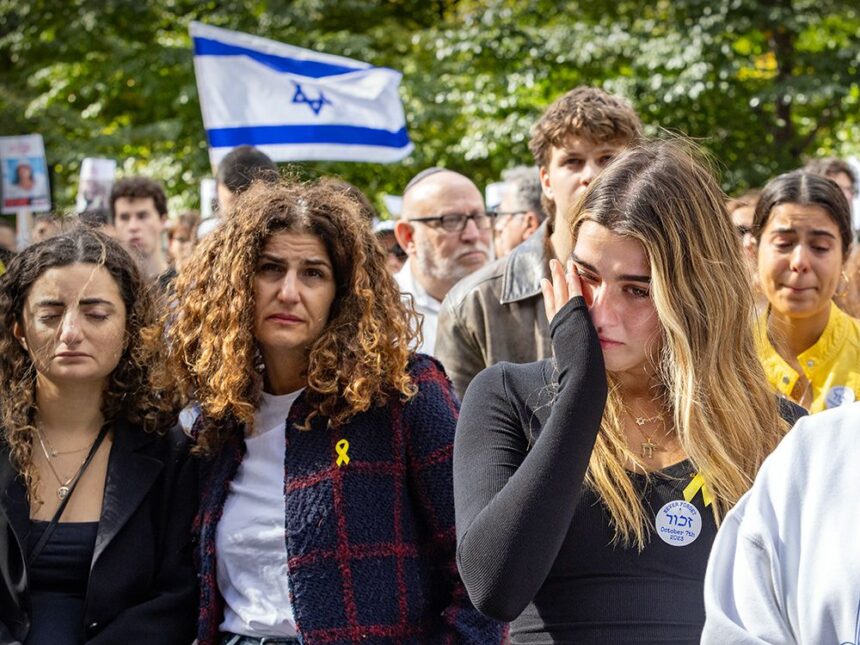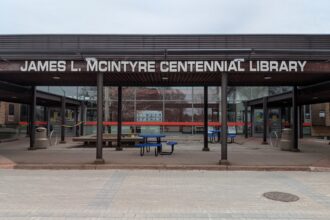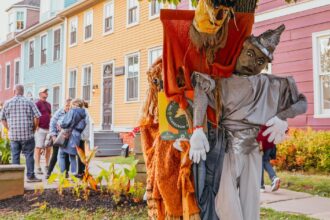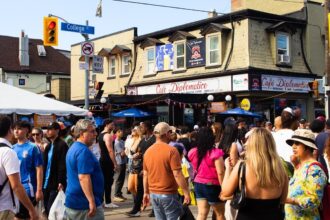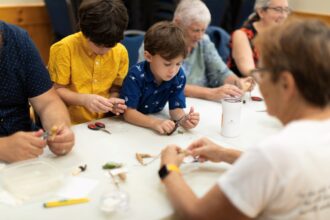The dimmed lights of Toronto’s Beth Tzedec Congregation created an intimate atmosphere as Harvard psychologist Dr. Samantha Abrams addressed a packed room this past weekend. The crowd—diverse in age but unified in attention—had gathered for what would prove to be not just an academic lecture but a profound exploration of Jewish trauma, memory, and resilience.
“When we discuss trauma in the Jewish context,” Dr. Abrams began, “we’re talking about something that transcends individual experience. It lives in the collective consciousness, passed from generation to generation through stories, rituals, and sometimes even silence.”
The timing of her lecture could hardly be more relevant. Recent global events have once again thrust Jewish identity and safety into public discourse, creating what Dr. Abrams describes as “traumatic invalidation“—when the reality of one’s suffering is questioned or diminished by the broader society.
“The Jewish experience offers a unique window into how communities process historical wounds,” she explained. “From ancient persecutions to the Holocaust to contemporary antisemitism, there exists a continuous thread of memory that shapes identity and worldview.”
What makes Dr. Abrams’ approach particularly compelling is her integration of cutting-edge psychological research with cultural understanding. Drawing from her work at Harvard’s Center for Cultural Trauma Studies, she outlined how trauma physically manifests in the brain and body, potentially affecting gene expression that can be passed down through generations.
“We now understand that trauma isn’t just psychological—it’s biological,” she noted. “Studies of Holocaust survivors and their descendants have shown measurable differences in stress hormone regulation and anxiety responses. The body remembers what the conscious mind might prefer to forget.”
The audience, which included many second and third-generation Holocaust survivors, nodded in recognition. One attendee, 67-year-old Rebecca Goldstein, later shared: “My parents rarely spoke about what they endured, but I’ve always carried an inexplicable heaviness. Dr. Abrams helped me understand this isn’t imagination—it’s inheritance.”
Toronto’s Jewish community, one of Canada’s largest and most vibrant, has been particularly engaged with questions of cultural memory and trauma. The city’s diversity makes it an ideal setting for such discussions, as it reflects the broader tensions between preserving cultural memory and navigating contemporary society.
Dr. Abrams was careful to balance the weight of her subject with optimism. “The same mechanisms that transmit trauma can also transmit resilience,” she emphasized. “Jewish tradition is equally full of stories of survival, innovation, and ethical leadership. The question becomes: how do we honor the pain of the past while not being defined solely by it?”
This question resonates beyond the Jewish experience. As our understanding of intergenerational trauma grows, many cultural and ethnic groups are reexamining their histories through this lens. Indigenous communities, descendants of enslaved peoples, and refugee populations all navigate similar terrain.
The lecture concluded with a powerful assertion: “Healing doesn’t mean forgetting. It means integrating these stories into a larger narrative that includes joy, contribution, and future possibility.” For many in attendance, this framing offered a new perspective on familiar pain.
As the evening ended and attendees filtered into the cool Toronto night, conversations continued in small clusters. The lecture had clearly touched something essential—not just about Jewish experience, but about how humans carry history within themselves, and how acknowledging this burden can be the first step toward lightening it.
In our increasingly fractured cultural moment, when identity is both fiercely claimed and hotly contested, Dr. Abrams’ work reminds us that understanding collective trauma isn’t just an academic exercise—it’s a pathway to greater empathy across difference. The packed room at Beth Tzedec suggests we hunger for exactly this kind of nuanced conversation.
The question that lingers, perhaps, is whether we can extend this understanding beyond our own groups to recognize parallel patterns of pain and resilience in others. In doing so, might we find not just healing for ourselves, but new possibilities for connection in a world that desperately needs it?
For more explorations of cultural memory and identity, visit our CO24 Culture section, or explore related social analyses in CO24 Opinions.

